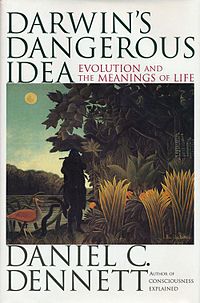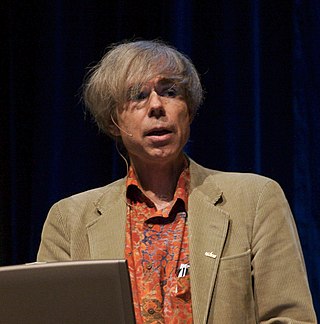
Consciousness, at its simplest, is sentience and awareness of internal and external existence. However, the lack of definitions has led to millennia of analyses, explanations and debates by philosophers, theologians, linguisticians, and scientists. Opinions differ about what exactly needs to be studied or even considered consciousness. In some explanations, it is synonymous with the mind, and at other times, an aspect of mind. In the past, it was one's "inner life", the world of introspection, of private thought, imagination and volition. Today, it often includes any kind of cognition, experience, feeling or perception. It may be awareness, awareness of awareness, or self-awareness either continuously changing or not. The disparate range of research, notions and speculations raises a curiosity about whether the right questions are being asked.
The Chinese room argument holds that a digital computer executing a program cannot have a "mind", "understanding", or "consciousness", regardless of how intelligently or human-like the program may make the computer behave. The argument was presented by philosopher John Searle in his paper, "Minds, Brains, and Programs", published in Behavioral and Brain Sciences in 1980. Similar arguments were presented by Gottfried Leibniz (1714), Anatoly Dneprov (1961), Lawrence Davis (1974) and Ned Block (1978). Searle's version has been widely discussed in the years since. The centerpiece of Searle's argument is a thought experiment known as the Chinese room.

Daniel Clement Dennett III is an American philosopher, writer, and cognitive scientist whose research centers on the philosophy of mind, philosophy of science, and philosophy of biology, particularly as those fields relate to evolutionary biology and cognitive science.

Darwin's Dangerous Idea: Evolution and the Meanings of Life is a 1995 book by the philosopher Daniel Dennett, in which the author looks at some of the repercussions of Darwinian theory. The crux of the argument is that, whether or not Darwin's theories are overturned, there is no going back from the dangerous idea that design might not need a designer. Dennett makes this case on the basis that natural selection is a blind process, which is nevertheless sufficiently powerful to explain the evolution of life. Darwin's discovery was that the generation of life worked algorithmically, that processes behind it work in such a way that given these processes the results that they tend toward must be so.

Douglas Richard Hofstadter is an American scholar of cognitive science, physics, and comparative literature whose research includes concepts such as the sense of self in relation to the external world, consciousness, analogy-making, artistic creation, literary translation, and discovery in mathematics and physics. His 1979 book Gödel, Escher, Bach: An Eternal Golden Braid won both the Pulitzer Prize for general nonfiction and a National Book Award for Science. His 2007 book I Am a Strange Loop won the Los Angeles Times Book Prize for Science and Technology.

The Age of Spiritual Machines: When Computers Exceed Human Intelligence is a non-fiction book by inventor and futurist Ray Kurzweil about artificial intelligence and the future course of humanity. First published in hardcover on January 1, 1999 by Viking, it has received attention from The New York Times, The New York Review of Books and The Atlantic. In the book Kurzweil outlines his vision for how technology will progress during the 21st century.

John Rogers Searle is an American philosopher widely noted for contributions to the philosophy of language, philosophy of mind, and social philosophy. He began teaching at UC Berkeley in 1959, and was Willis S. and Marion Slusser Professor Emeritus of the Philosophy of Mind and Language and Professor of the Graduate School at the University of California, Berkeley until 2019.
"Computing Machinery and Intelligence" is a seminal paper written by Alan Turing on the topic of artificial intelligence. The paper, published in 1950 in Mind, was the first to introduce his concept of what is now known as the Turing test to the general public.
A philosophical zombie or p-zombie argument is a thought experiment in philosophy of mind that imagines a hypothetical being that is physically identical to and indistinguishable from a normal person but does not have conscious experience, qualia, or sentience. For example, if a philosophical zombie were poked with a sharp object it would not inwardly feel any pain, yet it would outwardly behave exactly as if it did feel pain, including verbally expressing pain. Relatedly, a zombie world is a hypothetical world indistinguishable from our world but in which all beings lack conscious experience.

Victim of the Brain is a 1988 film by Dutch director Piet Hoenderdos, loosely based on The Mind's I (1981), a compilation of texts and stories on the philosophy of mind and self, co-edited by Douglas Hofstadter and Daniel C. Dennett. The film weaves interviews with Hofstadter with adaptations of several works in the book: Dennett's Where am I?, The Soul of the Mark III Beast by Terrel Miedaner, and also the short story The Seventh Sally: How Trurl's Own Perfection Led to No Good from The Cyberiad by Stanisław Lem. The film was shown several times on television in the Netherlands in the late 1980s.
The philosophy of artificial intelligence is a branch of the philosophy of technology that explores artificial intelligence and its implications for knowledge and understanding of intelligence, ethics, consciousness, epistemology, and free will. Furthermore, the technology is concerned with the creation of artificial animals or artificial people so the discipline is of considerable interest to philosophers. These factors contributed to the emergence of the philosophy of artificial intelligence. Some scholars argue that the AI community's dismissal of philosophy is detrimental.
In cognitive science and semantics, the symbol grounding problem concerns how it is that words get their meanings, and hence is closely related to the problem of what meaning itself really is. The problem of meaning is in turn related to the problem of how it is that mental states are meaningful, hence to the problem of consciousness: what is the connection between certain physical systems and the contents of subjective experiences.
In philosophy of mind, the computational theory of mind (CTM), also known as computationalism, is a family of views that hold that the human mind is an information processing system and that cognition and consciousness together are a form of computation. Warren McCulloch and Walter Pitts (1943) were the first to suggest that neural activity is computational. They argued that neural computations explain cognition. The theory was proposed in its modern form by Hilary Putnam in 1967, and developed by his PhD student, philosopher, and cognitive scientist Jerry Fodor in the 1960s, 1970s, and 1980s. Despite being vigorously disputed in analytic philosophy in the 1990s due to work by Putnam himself, John Searle, and others, the view is common in modern cognitive psychology and is presumed by many theorists of evolutionary psychology. In the 2000s and 2010s the view has resurfaced in analytic philosophy.

Philosophy of mind is a branch of philosophy that studies the ontology and nature of the mind and its relationship with the body. The mind–body problem is a paradigmatic issue in philosophy of mind, although a number of other issues are addressed, such as the hard problem of consciousness and the nature of particular mental states. Aspects of the mind that are studied include mental events, mental functions, mental properties, consciousness and its neural correlates, the ontology of the mind, the nature of cognition and of thought, and the relationship of the mind to the body.

The mind–body problem is a philosophical debate concerning the relationship between thought and consciousness in the human mind, and the brain as part of the physical body. The debate goes beyond addressing the mere question of how mind and body function chemically and physiologically. Interactionism arises when mind and body are considered as distinct, based on the premise that the mind and the body are fundamentally different in nature.

Justin Fritz Leiber was an American philosopher and science fiction writer. He was the son of fantasy, horror and science fiction author Fritz Leiber and the grandson of stage and film actor Fritz Leiber, Sr. Previously a professor of philosophy at the University of Houston, Leiber was most recently a professor emeritus of philosophy at Florida State University. He was a visiting fellow at Linacre College, Oxford during the Trinity term on numerous occasions.

The Turing test, originally called the imitation game by Alan Turing in 1950, is a test of a machine's ability to exhibit intelligent behaviour equivalent to, or indistinguishable from, that of a human. Turing proposed that a human evaluator would judge natural language conversations between a human and a machine designed to generate human-like responses. The evaluator would be aware that one of the two partners in conversation was a machine, and all participants would be separated from one another. The conversation would be limited to a text-only channel, such as a computer keyboard and screen, so the result would not depend on the machine's ability to render words as speech. If the evaluator could not reliably tell the machine from the human, the machine would be said to have passed the test. The test results would not depend on the machine's ability to give correct answers to questions, only on how closely its answers resembled those a human would give.
Robert M. French is a research director at the French National Centre for Scientific Research. He is currently at the University of Burgundy in Dijon. He holds a Ph.D. from the University of Michigan, where he worked with Douglas Hofstadter on the Tabletop computational cognitive model. He specializes in cognitive science and has made an extensive study of the process of analogy-making.
Mechanism is the belief that natural wholes are similar to complicated machines or artifacts, composed of parts lacking any intrinsic relationship to each other.
The Penrose–Lucas argument is a logical argument partially based on a theory developed by mathematician and logician Kurt Gödel. In 1931, he proved that every effectively generated theory capable of proving basic arithmetic either fails to be consistent or fails to be complete. Mathematician Roger Penrose modified the argument in his first book on consciousness, The Emperor's New Mind (1989), where he used it to provide the basis of the theory of orchestrated objective reduction.













